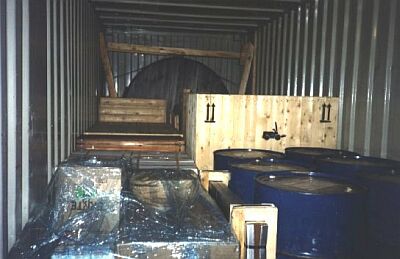 |
||
| Mixed cargo in a 20' box container | ||
The cable reel at the front of the container is immediately obvious. It should be noted that this is not fully wound, so meaning that there are no problems with weight distribution in the container.
The securing of cable reels is covered in the special section relating to cable reels. Here, a critical eye will be cast over the packing and securing in the container door area.
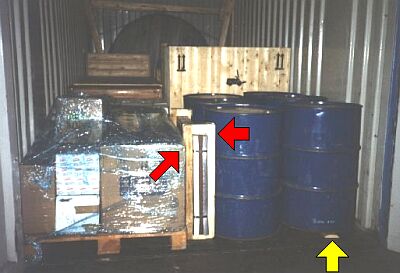 |
||
| Cargo risks in the door area | ||
If one looks closely, it is clear that any tilting of the container to the left could cause damage to the corners of the cartons on the pallet, if the forces exerted by the barrels press via the vertically positioned sheet package onto the corners of the cartons.
It may be noted that the right-hand barrel has been raised, with the intention of preventing the barrels from being pushed up by the corrugations. The idea is a good one, but is only feasible with two barrels stowed as a pair.
A better understanding will be gained from the following comments.
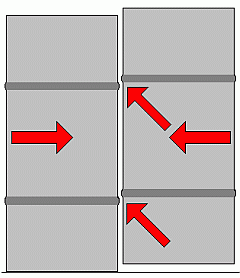 |
Barrels worked upwards by their corrugations |
Conventional corrugated barrels have the unfortunate habit of pushing one another upwards by the corrugations and "hanging" from them. This disadvantageous design may thus lead directly to damage. Moreover, this pushing-up effect creates gaps in the cargo, which indirectly cause destruction of the drum due to the inertia forces which additionally arise.
| Alternate raising of barrels using boards |
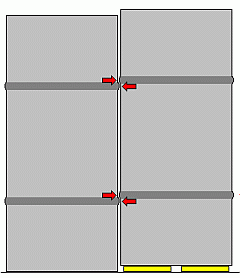 |
Although barrels can be alternately raised using stowage supports, this method can only be applied to barrels stowed in pairs. In a block consisting of more than 2 barrels, the method is no longer usable, as well as being material- and labor-intensive. Moreover, damage may arise, since the loading capacity of the body of a barrel is less than that of the corrugations, so meaning that, under elevated forces, the corrugations may form dents in the barrel bodies.
A possible way round the problem is to fill the gaps between the barrels with boards or the like.
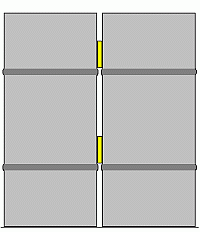 |
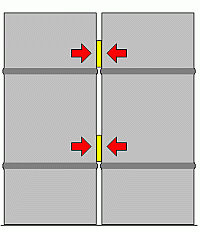 |
||
| Filling of gaps created by barrel corrugations | |||
A note of caution must be sounded, however: if bearing areas are too small, excessive pressure may still cause denting of the barrel bodies.
The use of load securing foam would help avoid high pressures. However, such foams can only be used for rail and road container transport and are prohibited for maritime transport because their recovery is too low.
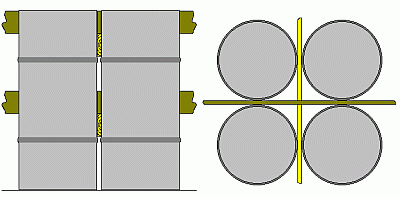 |
||
| Filling of lengthwise and crosswise gaps created by barrel corrugations | ||
The filling material has to be inserted in both the lengthwise and the crosswise direction. Preventive measures for loss prevention - caused by the inadequacies of commercially available barrels, pails, buckets, drums and similar receptacles - are expensive from the point of view both of materials and in particular of labor.
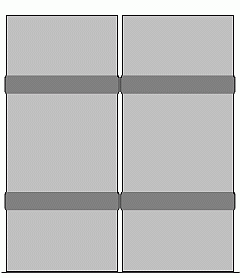 |
Problem-free stowage of barrels with wide corrugations |
It would be better if more drums were used with wide, tall corrugations, whose lids, closures, drop handles etc. do not project beyond their diameter.
| Load transfer via barrel corrugations |
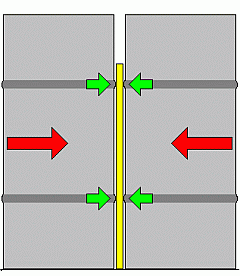 |
In order to be able truly to prevent denting damage where several barrels are present, hardboard, chipboard or similar flat materials must be inserted in such a way that the corrugations can transfer load via these materials.
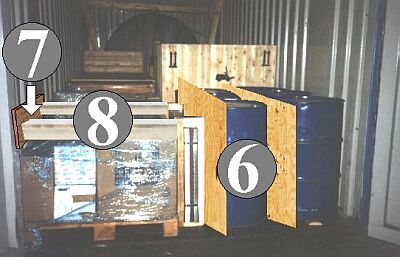 |
||
| Measures for protecting pallet cargo from harmful pressures |
||
To rule out damage, hardboard is placed (6) between the outer and inner row of barrels and between the inner row of barrels and the vertical metal sheet package. Above the cartons, the forces exerted by the barrels and the sheet package are taken up by squared lumber (8), whose compressive forces are distributed to part of the container side wall via a board (7).
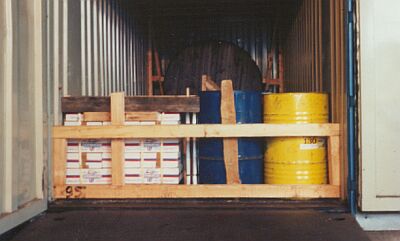 |
||
| Mixed cargo in a 20' corrugated steel container | ||
This packing example is similar the one discussed above. Positive features are that the cargo is stowed under cover and the dock plate meets the requirements of the German accident prevention regulations.
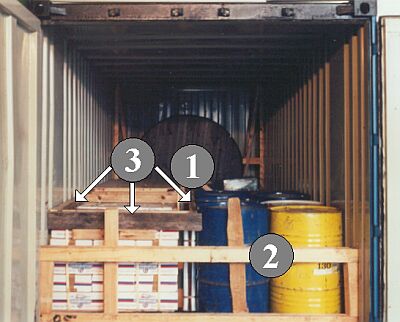 |
||
| Measures for protecting the cartons from mechanical damage | ||
The cable reel (1) has been somewhat differently secured. Variants of this securing can be found in the cable reel section. The blue barrels are raised and the top securing member on the door side has been positioned at the level of the corrugations (2), since these are the parts of the barrels with sufficient loading capacity. Lateral forces which may be exerted by the barrels are transferred to the container walls via the squared lumber (3) and wooden members have been fitted lengthwise for pressure distribution. These measures prevent stress to the carton block.
The situation is different here:
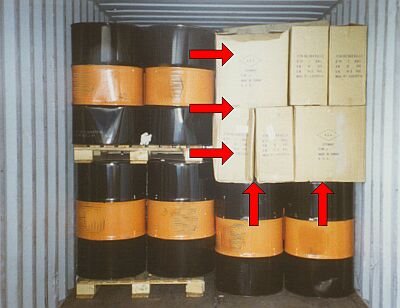 |
||
| Risk of damage to cartons in a box container | ||
The cartons may be squashed by the barrels. In addition, the bottoms of the cartons may be damaged because no appropriate interlayer dunnage has been provided and they are therefore exposed to high pressures from the barrel rims.
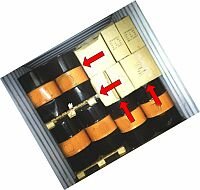 |
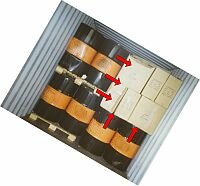 |
|
| Rolling angles of 30° to each side occur. | ||
The risk of damage becomes clearer if a rolling angle of 30° is assumed for ships and 30,000 alternating loads are assumed to occur during a voyage.
Such carelessness is not unusual during packing:
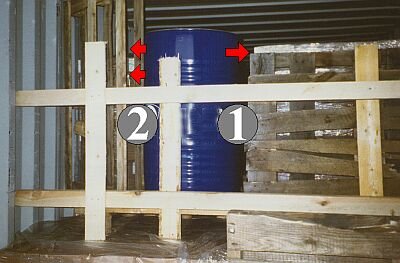 |
||
| Inadequately packed 20' box container | ||
Due to the stowage gap (1), the barrel may start to move and damage the cartons to the right of the gap (1) and behind the pallet (2). Packing personnel must always remember that changes in speed and direction occur during carriage which result in considerable inertia forces.
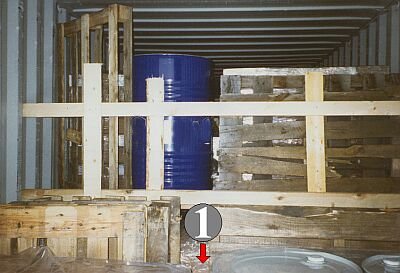 |
||
| Stowage gaps in a packed 20' container | ||
Even small gaps as at (1) may result in damage under unfavorable conditions. If further cartons were added here, interlayer dunnage would have to be laid on the barrels.
The gaps are still more obvious from this perspective.
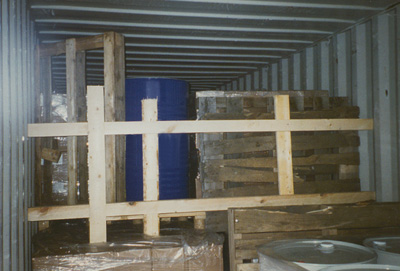 |
||
| Easily visible gaps in a 20' box container | ||